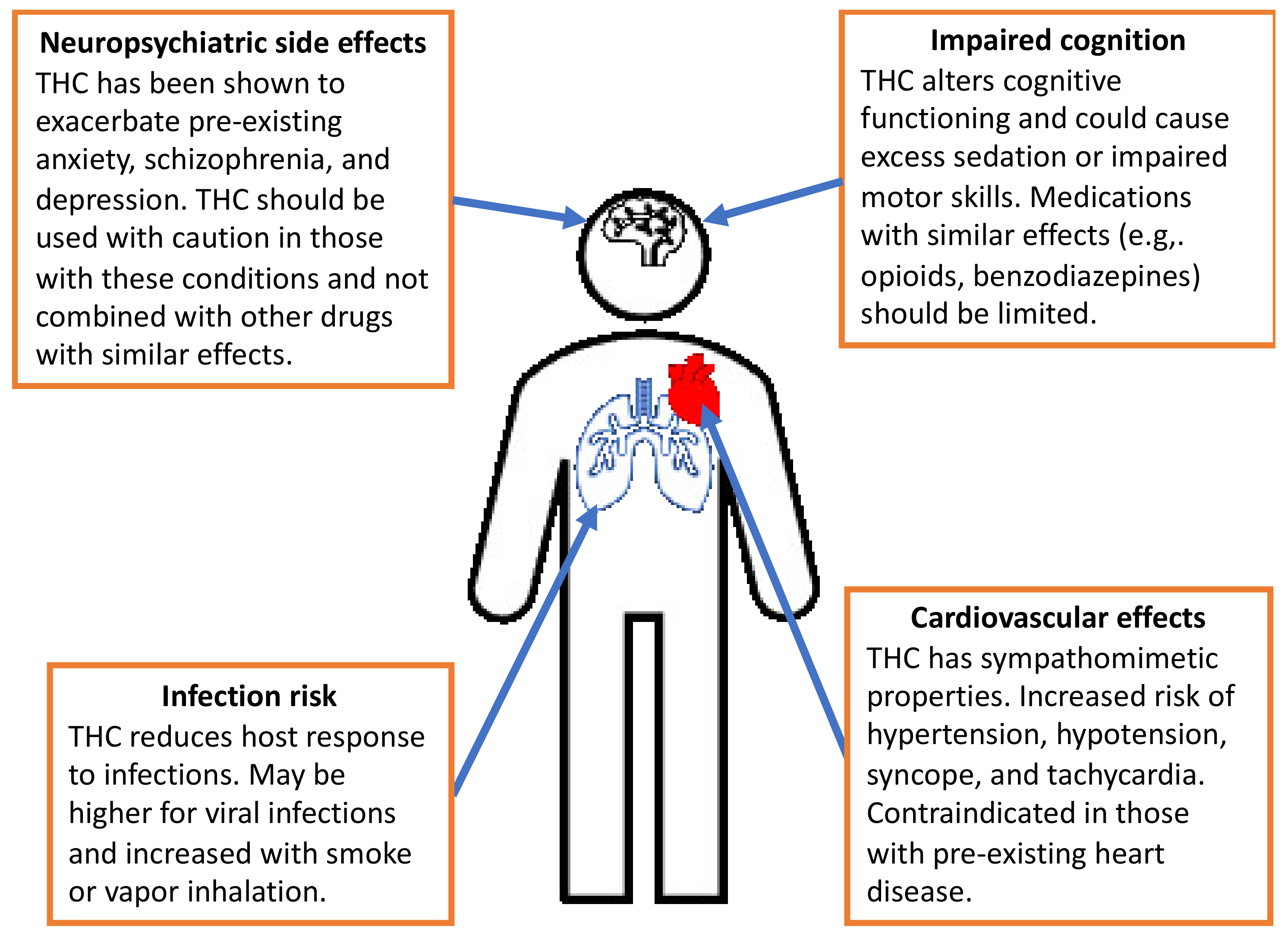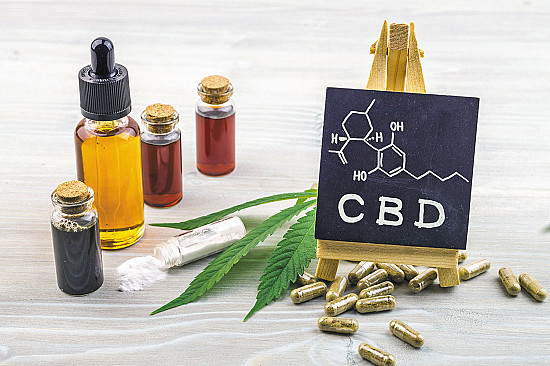
THC is the main psychoactive component of cannabis.
THC, the main psychoactive component of cannabis, attaches itself to cannabinoid nerve receptors in the brain. This triggers the high. THC lasts longer in the body than most drugs, although its psychoactive effects are only temporary. You can consume it orally via oils, edibles, and sublingual dissolvable stripe.
THC is present in marijuana in different amounts. Some strains only contain 0.3 percent THC and others have 20 percent or more. According to the National Highway Traffic Safety Administration, the average THC concentration in marijuana, hashish, and hashish oil is between one and five percent. Although the amount of THC found in recreational marijuana varies from one strain to the next, it is generally the same. However, the higher the THC content, you will need more to achieve the desired effects.
It can be detected in a person's breath up to a month after impairment subsides
THC in marijuana can be detected up to one year after impairment has stopped. Because the drug remains in your body for 2 to 3 hours, you can detect it in breath samples long after impairment has subsided. That's why law enforcement has been focusing on developing new impaired driving detection devices.

THC can be detected by a Breathalyzer and this can indicate that someone is under the influence of marijuana. This does not necessarily mean they were driving while impaired. It is possible to detect marijuana in the blood of someone even months after impairment has stopped.
Prices
A breathalyzer for weed will revolutionize the arrest process, especially in zero tolerance states like California, where it is illegal to drive while under the influence of drugs. The current procedure is for the officer to ask the suspect to complete a driving test, or a blood or urine test. These procedures can be eliminated and arrests will be reduced with this technology.
But, the price for a cannabis breathalyzer is not affordable. The average unit costs more than $5,000, and the single cartridge is over $10,000. This is similar to the price of breathalyzers for alcohol, which cost anywhere from $60 to $1000. However, some devices are more affordable, costing as little as $15 per cartridge.
Legality
Prototypes of a marijuana breathalyzer are being developed by several companies as well as scientific research projects. It is still early in development but it may detect THC, the psychoactive part of marijuana. This device has many legal issues. First of all, its accuracy is questionable because it is unable to detect small amounts of THC.

The National Institute of Standards and Technology is developing standards for a marijuana-related DUI detection test. It is hoped that the marijuana breathalyzer will be available to the public by early next year. It is strongly advised that marijuana users refrain from driving after using it.
Regulation
The new marijuana breathalyzer could be used to regulate marijuana use on public roads. It can also pose problems for law enforcers. Because marijuana remains in the body for longer than alcohol, users could be tested at higher levels than other drivers. THC can also be stored in fat cells, which makes it harder to determine legal limits of impairment.
Another challenge is developing a breathalyzer for weed regulation that could detect recent use of marijuana without compromising the test's accuracy. This is difficult as cannabis remains in the blood long after the "high" wears off. There are many startups that have developed breathalyzers to regulate marijuana.
FAQ
What CBD products have the highest sales?
CBD products are everywhere these days. CBD products are popular for their ability to relieve pain and anxiety. The market is huge and growing fast.
But what are people buying CBD oil for? And how does this affect you as a brand owner?
Well, according to Statista, CBD products are being bought for their relaxing effects. They can also be used to treat inflammation.
This means that products with both CBD or THC can be sold both for recreational and medicinal purposes.
What about brands that are focused on a single purpose? It won't be able to compete if it sells CBD for pain relief.
Additionally, a brand that focuses solely on CBD for medical purposes will enjoy a large customer base.
But, if a brand is looking to target recreational users they will need to develop a unique selling position (USP). A USP basically refers to a unique selling point that sets a brand apart.
Some brands offer free shipping while others offer bulk discounts.
Is CBD a good company to invest?
The market for hemp-based products continues to grow as people become increasingly aware of their benefits. By 2022, the market for hemp-based products will reach $1 billion.
The market is expected to continue growing at over 20% per year until 2020 when it reaches $2.5billion.
Hemp oil is used in many beauty- and health-care products like lotions.
A number of companies produce CBD-infused beverages, pet foods, dog treats, snacks, and other food items.
CBD is currently legal across all 50 states. But, this may change in the near future. CBD is legal in all 50 states, but more research will be conducted to determine its potential uses. Businesses will have an easier time operating legally.
These are just a few of the many reasons CBD investment can be lucrative.
Which countries produce CBD of the highest quality?
The United States is the largest producer of CBD products.
Canada, Australia New Zealand, Israel, and New Zealand all produce high-quality CBD products.
What are some common blunders that companies make when they venture into the US cannabinoid markets?
First, you need to be familiar with the regulations regarding cannabis products. This could lead to you having to modify your product formulation.
A second error is not properly labeling your product. Know whether your product contains THC, CBD or both.
Thirdly, you should understand how to package your product correctly. If your product contains THC you should ensure that it's packaged in child-resistant containers.
If your product does not contain THC, then you should still follow all packaging laws because there are many states where cannabidiol (CBD) is legal.
Keep track of any recalls regarding your products. Customers should be notified as soon as possible if there are any issues with their product.
Statistics
- HR −16 mmHg; 95% CI −26, −6; I2 = 92%) (ncbi.nlm.nih.gov)
- While the primary injury may not be treatable, interventions that attenuate secondary sequelae are likely to be of benefit [203].Only one study (ncbi.nlm.nih.gov)
- As a substance that was federally illegal before the passage of the 2018 Farm Bill, hemp-derived cannabinoids with no more than 0.3% THC still face a regulatory grey area. (forbes.com)
- The use of these products is likely to become even more widespread if the World Health Organization's recommendation that CBD no longer is scheduled in the international drug control conventions is adopted by the United Nations member states [201]. (ncbi.nlm.nih.gov)
- however, one study also found that these effects were virtually abolished when the original media (a nutrient broth agar) was replaced with one containing 5% blood (increasing the minimum concentration to ~160 μM CBD) [179]. (ncbi.nlm.nih.gov)
External Links
How To
What are the main issues with the CBD industry.
The market for CBD products continues to grow at an amazing rate. But, businesses who want to enter this market still face numerous challenges. These include a lack consumer awareness, high-cost entry, limited access capital and regulatory uncertainty.
Many consumers aren't aware of the benefits and limitations of CBD. They are unable to make an informed decision about buying CBD products.
CBD companies heavily rely on word-of-mouth advertising. This is expensive because it requires paying for advertising and hiring staff to promote their brand.
Another problem for new entrants to CBD is the high price of production. It is very expensive to obtain the raw materials required for CBD products. CBD oil can only then be produced if the hemp has been grown in a specific environment.
To grow enough hemp for CBD oil production, it costs approximately $1,000 per acre. Because of this, many small farmers are unable to afford to grow enough hemp for CBD oil.
The lack of capital access is another obstacle new entrants to the CBD market face. Banks discourage many people from starting a business because of the stigma attached to this industry.
There is also regulatory uncertainty around the sale of CBD products. There are no guidelines for how CBD products should market.
Despite some states having passed laws restricting the sale CBD products, this is not yet a national policy.
Only Nevada, Maine, and Nevada have legalized recreational pot.
Massachusetts and Michigan, however, are exploring similar options.
These changes could lead to increased competition between CBD manufacturers.
Many entrepreneurs prefer to work at home over starting a business.